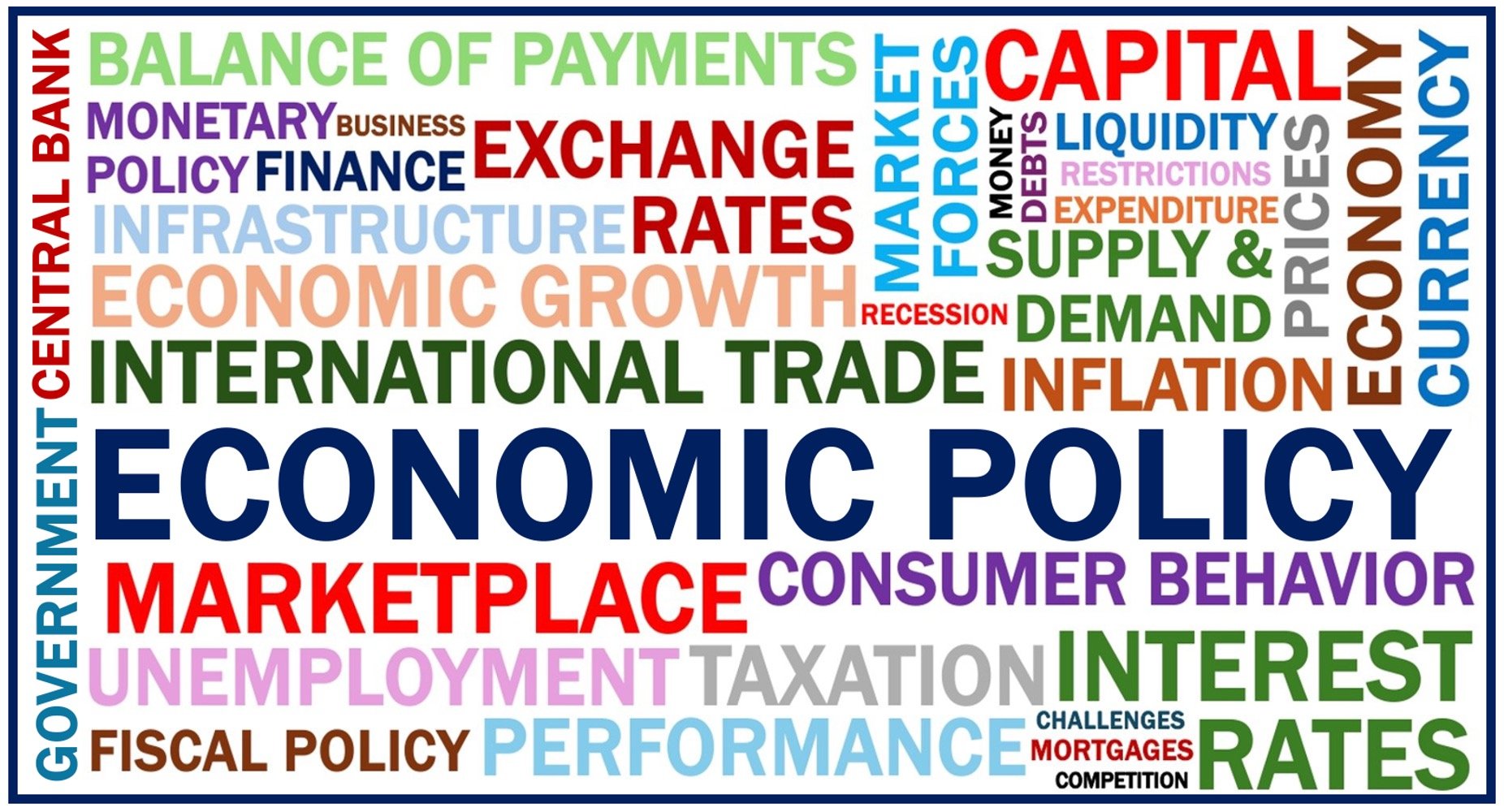What is an Economic Policy?
The measures and strategies that the government adopts to manage or influence the country is its Economic Policy. Through its policy, the government aims to achieve specific goals, such as reducing unemployment, ensuring sustainable GDP growth, maintaining a stable currency, and controlling inflation.
The measures that the government takes can affect how resources are allocated, the distribution of wealth, and how the economy adapts to changes and challenges.
According to EUR-Lex, an official website of the European Union:
“Economic policy covers a wide range of measures which governments use to manage their economy. These include monetary policy (money supply and demand), taxation, budget, job creation, etc.”
Two types of economic policies
The two main types of economic policies are monetary policy and fiscal policy.
-
Monetary Policy
The country’s central bank is in charge of monetary policy. It can alter interest rates or the money supply.
If it raises interest rates, the economy is likely to slow down, because borrowing becomes more expensive, so there is less of it. When businesses borrow less, there is less money spent on capital goods (machinery and other things that help boost production). If consumers borrow less, they also spend less, which means that retailers earn less.
Conversely, if the central bank lowers interest rates, businesses and consumers borrow more, which means that there is more spending. When there is more spending, the economy expands.
Central banks tend to raise interest rates when the economy is overheating, or inflation is too high. When there is an economic downturn, that is, a recession, it will probably reduce interest rates.

-
Fiscal Policy
The government is in charge of fiscal policy, which involves public expenditure and taxation income. The government gets money through taxation. By adjusting tax rates and levels of public expenditure, the government can boost economic activity during a recession and cool down one that is overheating.
It will try to spend more if things slow down too much. If the economy is too “hot,” it may raise tax rates to reduce consumer spending.
Managing economic health and stability
Sound economic policies are crucial for a healthy, growing, and stable economy. Governments develop them in response to economic indicators and conditions, such as:
- GDP Growth Rates:
The rate of increase in a nation’s production of goods and services. - Levels of Unemployment:
The proportion of jobless individuals actively seeking work. - Inflation Rates:
The pace at which prices for goods and services rise. - Interest Rates:
The cost of borrowing money, affecting spending and saving. - Balance of Trade:
The difference in value between a country’s imports and exports. - Public Debt Levels:
The total amount of money the government owes. - Currency Exchange Rates:
The value of one currency in terms of another. - Consumer Confidence:
How optimistic consumers are about the economy. - Business Investment:
Company spending on capital goods.
Crafting economic policies is not easy
Creating the right economic policy is not easy. The government must balance competing needs and predict the outcomes of their interventions in rapidly moving and complex local, regional, and global economies.
Their policies must also be adaptive so that they can respond to emerging challenges, evolving societal needs, and technological changes.
Conclusion
For central banks and governments, economic policies are vital tools to manage and steer the economy. Through monetary and fiscal measures, they aim to achieve sustainable growth, economic stability, and improve the living standards of their citizens.

